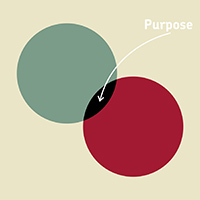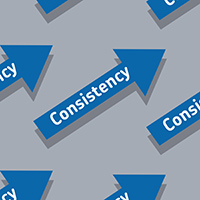Podcast: Play in new window | Download | Embed
Today’s Guest
I met Erica at a large house party that she threw in Chiang Mai.
Erica Blair joins the 57th session of Smart Brand Marketing.
She lives a bit out of town and her house is virtually in the middle of a jungle and feels like a resort that you would book for a weekend away.
After we connected I started seeing her in my FB feed a lot. It was a mixture of branding messages, hippie stories and some very interesting ways of giving back to the community. The one that stood out to me was when she gave away 2 or 3 days of her time and let anyone book free sessions with her to talk about brand strategy. I thought at that moment that the least I can do is get her on the show and figure out what it is exactly that she does.
Listen now 🙂
TOPICS DISCUSSED
- The definition of a brand
- What does a brand strategist do
- Process of helping dial in a good name
- The thought process that goes into creating a solid brand
- When is it time to rebrand
- What most people need help with
- Most common mistakes
- Branding vs marketing
Enjoy!
How to Create the Best Strategy for Your Brand
Let’s just assume that you’ve suddenly realized that whatever you are doing with your brand is not yielding you the results that you were looking for. Perhaps your brand has become too all over the place or nobody knows about your brand enough. Whatever the case, the branding for your business, for the lack of a better word, sucks.
So, what now? For starters, it’s time that you reconsider your strategy for branding. To do that, however, it’s best that we go back to the basics first.
What’s a Brand?
This one’s easy, right? After all, the definition of a brand is one of the first things that every marketer learns either in school or in the business. However, the more proper question is “what does a brand mean today?”

Definitions for marketing terms have evolved with the industry and branding is no different. Back then, a brand simply means a generic description of any product that fits a certain category which makes the term share certain qualities with a brand name.
However, that was back then during the age of the Baby Boomers. The definition of a brand is more sophisticated these days. Simply put, a brand right now is what your target market thinks of your business whenever they hear of its name. It’s everything that people think of your brand whenever it is mentioned in the market.
It doesn’t even matter if that perception is true or not, there is no controlling your target market as far as how the market thinks about your business. So as long as that is the way they perceive your business, then that is your brand.
Of course, there is a way to influence the market to have a better perception of your brand and this is where your brand strategy comes in.
What Makes a Strong Branding Strategy?
So your branding strategy is a plan that should cover every aspect of your business crafting its very own successful brand in the market. In short, these are the methods that you will use to not only make your business stand out in the market but to also make it as identifiable as possible.
With that in mind, how then should you craft a branding strategy? To make that easier for you, let’s break down a branding strategy to its most basic of components.
- 1. Purpose
 If you think about it, most businesses work through you offering a promise, be it products and services, which the market takes and pays you money for in the hope that your promise translates to something tangible and of good quality. However, in branding, promises are not just enough. You have to define a purpose for it.
If you think about it, most businesses work through you offering a promise, be it products and services, which the market takes and pays you money for in the hope that your promise translates to something tangible and of good quality. However, in branding, promises are not just enough. You have to define a purpose for it.
Now, a purpose for a brand can be seen in two ways:
- a. Intentional – Consider this as the more altruistic purpose that your branding could take. Basically, you are not just telling the market that you are here to make money but to also make a difference. Success, then, with this kind of purpose is going to be determined by the relationship you can establish for your business with the market.
- b. Functional – This concept focuses more on the commercial reasons as to why your business is set up in the first place. In other words, your business is there to make money which means that the purpose of your branding is to help make the business as profitable as possible.
- 2. Consistency
 This is where a lot of marketers fail as they tend to change the position of their businesses once every few years to hop on to trends. Saying what people like to hear or talking about things that people relate to is good but this should not come at the expense of being consistent.
This is where a lot of marketers fail as they tend to change the position of their businesses once every few years to hop on to trends. Saying what people like to hear or talking about things that people relate to is good but this should not come at the expense of being consistent.
Let’s take a look at what happened in the last US Presidential Elections. Compared to each other, Hillary Clinton had a platform that was aimed towards loftier goals and was the one that talked about issues that resonated the most with large demographics. From LGBT Issues to lowering taxes, Clinton was the one candidate that talked more about socially and culturally beneficial goals.
The reason she lost, though, was many felt that she was inconsistent with whatever she was saying as a presidential candidate versus what she was saying when she was still a secretary. In fact, she only adopted her more popular stances only after she secured her Liberal candidacy. As far as consistency was concerned, Trump beat her by a mile.
- 3. Emotion
 If there is one thing that you have to know about people is that being rational is something that we don’t do all of the time. This is something that advertising has taken advantage of for years as people tend to be easily convinced to buy something if you appeal to their emotions.
If there is one thing that you have to know about people is that being rational is something that we don’t do all of the time. This is something that advertising has taken advantage of for years as people tend to be easily convinced to buy something if you appeal to their emotions.
After all, how else would you explain people going out of their way to eat at restaurant located far from their homes or stocking up on skincare products that they don’t need.
Emotions like fear, need for affection, outrage, the need to socialize, and lust/love. These are all valid emotional hooks that you can use for your branding. The point here is that you add a bit of emotion to your strategies if you want to connect with people on a personal level.
- 4. Flexibility
 “Now hold on!” You might say “How am I going to be flexible and consistent at the same time?” It’s true that flexibility and consistency are two different, contrasting concepts but there is a way to reconcile both and that’s in the way you apply them in your branding.
“Now hold on!” You might say “How am I going to be flexible and consistent at the same time?” It’s true that flexibility and consistency are two different, contrasting concepts but there is a way to reconcile both and that’s in the way you apply them in your branding.
Consistency is about setting a standard for your branding to follow. Flexibility, on the other hand, is all about making enough adjustments to be relevant and build interest for the business. So, simply put, being consistent is about setting qualities that make you identifiable while flexibility is about adding variety to your strategies to better connect with the market. Being flexible with your strategies will also help prevent things from getting too stale.
- 5. Being Aware of the Competition
 The one thing you must never do when it comes to competition is either underestimate it or, worse, ignore it. You and a whole lot of other businesses are in the same market vying for the same people, right? Why not take the time to watch and study what they are doing with their branding.
The one thing you must never do when it comes to competition is either underestimate it or, worse, ignore it. You and a whole lot of other businesses are in the same market vying for the same people, right? Why not take the time to watch and study what they are doing with their branding.
Are they connecting with customers? How does the rest of the market perceive them? Where are they failing and succeeding when it comes to their branding? Any detail you can get from your competition will help you in the long run for your own branding efforts.
For an example, let’s take a look at two major comic books: Marvel and DC. Sure, both offer the same products i.e. stories about people in spandex in out of this world adventures but how the comic book community views both companies are different from each other.
You see, DC is considered as this uppity, straight-laced older brother in comics while Marvel is the cheeky, young upstart for several decades and that has reflected in their stories and characters. Today, things are different with Marvel being the more politically correct, inclusive publisher while DC is killing it in sales with inventive superhero stories.
The point is that never has there been in any point of their existence that one comic book company has ever been mistaken for another throughout the years and both have learned from the mistakes and successes of one another.
When it comes to rebranding, it would really help if you can also take a look at your company’s current performance as well. How things are faring as far as profits are concerned can tell you where your business currently stands in with the rest of the market and what direction you should take next.
When Should You Rebrand?
We have always talked about being consistent with our branding but there comes a time when there is no other course but to rebrand. Rebranding itself is not a bad thing for any business as it can help you reach out to your target market quicker. Just look at what Uber did in the early 2010s or, to the same extent, what singer Madonna has been doing since the late 1990s.
The question is when should you consider rebranding your business? Aside from any personal reason you might have, there are certain signs that you should be on lookout for.
- 1. Tapping into New Demographics
 This is a common thing for businesses to do since everyone wants to survive in the market. To do that, you will have to reach out to newer demographics which might require for you give your business a revamp.
This is a common thing for businesses to do since everyone wants to survive in the market. To do that, you will have to reach out to newer demographics which might require for you give your business a revamp.
Take a look at Pabst Blue Ribbon. In the US, it markets towards hipsters, bro-dudes, and frat-boys which is why the advertising for it is wild and frenetic. However, in China, PBR is seen as a luxury brand. This is why the marketing there features a calmer and more sophisticated style, as if the ad is selling you high-end brandy. Both styles have allowed PBR to earn a lot from either market, by the way.
- 2. Casting Off an Old Image
 This might one of the most common reasons why you should rebrand. It might be because your current image is not allowing you to resonate with a wider demographics, something a lot of businesses had to consider when Millennials started exercising their purchasing power in the mid-2000s.
This might one of the most common reasons why you should rebrand. It might be because your current image is not allowing you to resonate with a wider demographics, something a lot of businesses had to consider when Millennials started exercising their purchasing power in the mid-2000s.
Take for example what happened to Old Spice. Before the 2010s, they were an obscure brand that seemingly targeted older demographics. When the 2010s came, Old Spice decided to shake things up and target younger audiences. As such, the meme-ridden, over-the-top, series of videos was born. As for Old Spice, it has since become a brand for the hip and young.
- 3. When You’ve Got Nothing to Bank on But a NameThis is something that is common on companies that were successful in making themselves known in the market but are suffering from poor execution of their products and services. For an example, let’s look at the all-too familiar tale of Harley-Davidson.By the 1980s, Harley-Davidson was popular and considered an American icon but it was in danger of being put out of business. Facing bankruptcy, the management of Harley-Davidson decided on a course of action that will change their image forever: keep the Harley-Davidson name but turn it into a luxury motorcycle brand.
From that point on, H-D production was cut down, marketing strategies revamped to fit the new image, and a focus on luxury-tier quality in every aspect of the vehicle was introduced. From that point on, Harley Davidson became a top-tier brand for motorcycles but retained the rugged Americanness that made the company popular before the 1980s.
- 4. Completing Your Original Goals
 When you have reached the first goal of your business, then its purpose has been fulfilled. Since, of course, you still want it to earn money, you give it a new purpose. This is where rebranding comes in as it helps your business assess itself on what it should do next in the market.
When you have reached the first goal of your business, then its purpose has been fulfilled. Since, of course, you still want it to earn money, you give it a new purpose. This is where rebranding comes in as it helps your business assess itself on what it should do next in the market.
Such instances often come in light of new technological advances like during the 1990s and 2010s. Many of the companies who thrived during these transition periods did so by reorganizing and rebranding themselves to meet newer standards and demands.
In Conclusion
There is no such thing as a market that remains ever the same for more than 10 years. Technologies change, customer behaviors change, social issues come and go, and with such comes a demand for businesses to better supply for the needs of their target audience.
How the rest of the public treats your business is something that you cannot control but a proper branding strategy should help your business remain relevant in the market. All it takes is careful planning, research, and a serious level of self-awareness on your part.
Have you tried rebranding your business? What other factors do you know that can affect your business’s brand in the market? Let us know in the comments below!
RESOURCES
THANK YOU FOR LISTENING!
To get more SBM content sent directly to your device as they become available, you can subscribe on iTunes or Stitcher!
Also, reviews on iTunes are extremely helpful and greatly appreciated! I read each and every one of them, and feel free to share your URL there so I can contact you later on and say thanks!
If you enjoyed this episode you may also love listening to:



